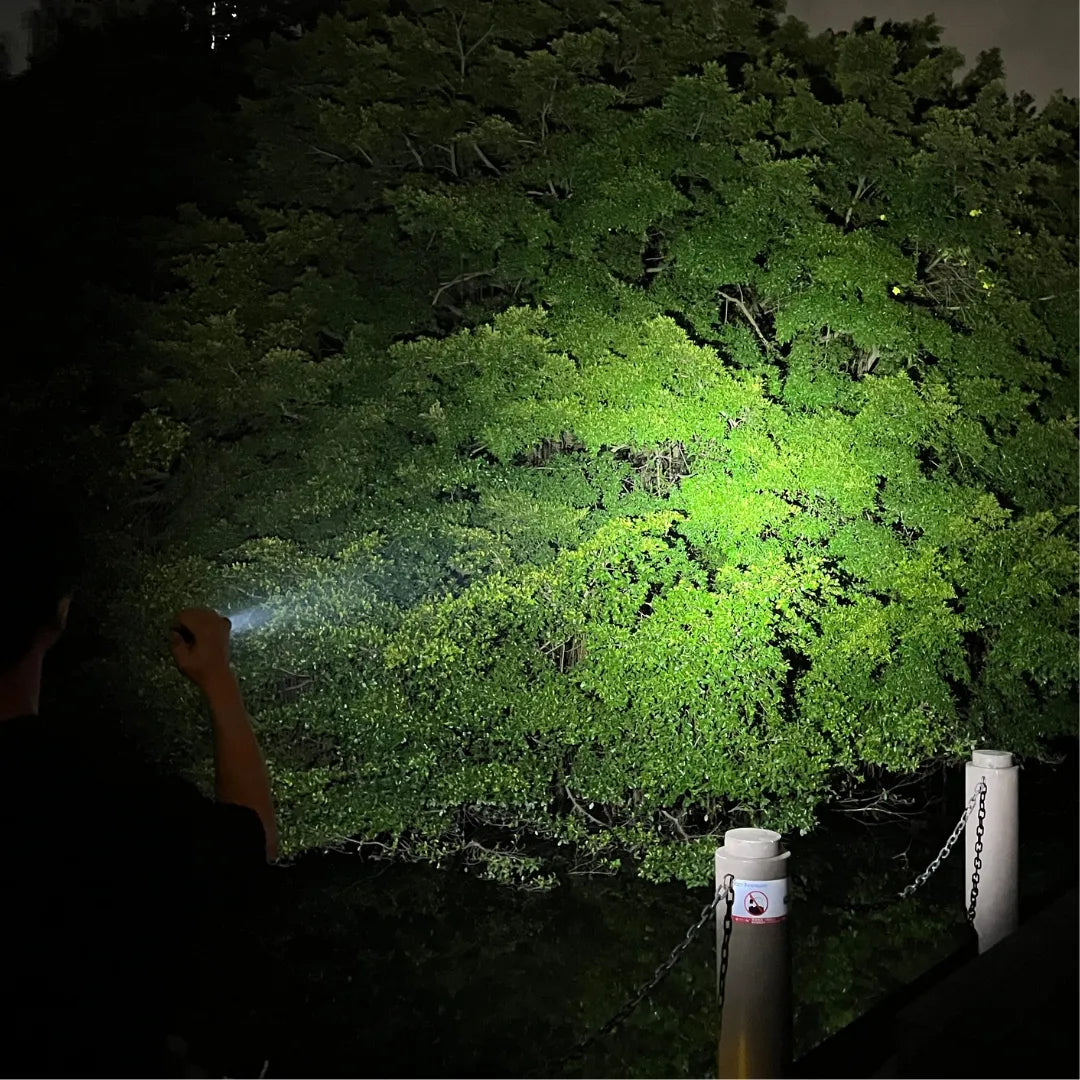💡 What Is CRI?
CRI (Color Rendering Index) measures how accurately a light shows the true colors of objects — compared to natural daylight.
It’s rated on a scale from 0 to 100:
-
100 CRI = perfect color accuracy, like sunlight.
-
70–80 CRI = standard flashlight LEDs.
-
90+ CRI = high-fidelity color, often used for professionals, photographers, or inspectors.
Why It Matters:
A high CRI flashlight makes colors look more natural — reds look red, browns look brown, not dull gray or washed out.
If you’ve ever looked at a map, wire, or trail marker and thought, “that color looks off,” you’ve experienced low CRI lighting.
🔥 What Is Color Temperature (CCT)?
Color Temperature, measured in Kelvin (K), describes the tone of the light — from warm yellow to cool blue.
| Color Temperature | Look | Common Description |
|---|---|---|
| 2700K – 3500K | Warm yellow | Cozy, indoor light (like an old bulb) |
| 4000K – 5000K | Neutral white | Natural daylight balance |
| 5500K – 6500K | Cool white / blueish | Crisp, outdoor daylight or tactical lighting |
So when you see someone say “5000K flashlight,” they’re talking about how the light looks, not how accurate the colors appear.
🎯 CRI vs CCT — How They Work Together
These two specs describe different things:
-
CRI = color accuracy (how true colors appear)
-
CCT = color tone (how warm or cool the light looks)
You can have a 5000K light with 90 CRI, meaning it looks like daylight and shows colors naturally.
Or a 6500K light with 70 CRI, which will appear very bright but slightly “cold” or “flat.”
Think of it like sound:
CCT is the pitch, and CRI is the clarity. Both matter for how pleasant the light feels to your eyes.
🧠 How This Affects Flashlight Use
Different situations call for different combinations of CRI and CCT:
| Situation | Ideal CRI | Ideal CCT | Reason |
|---|---|---|---|
| Camping & reading | 85–90 | 4000K–5000K | Warm, comfortable tone that feels natural |
| Hiking & outdoors | 80+ | 5000K–6000K | Balanced daylight for terrain and colors |
| Tactical or search use | 70–80 | 6000K–6500K | Cool beam for maximum visibility and distance |
| Photography / inspection | 90+ | 4000K–5000K | Precise color accuracy for detail work |
If you use your flashlight indoors or for up-close work, higher CRI and neutral white color temperature will reduce eye strain and show real detail.
For tactical or emergency use, cooler temperatures give a crisper beam and more apparent brightness.
⚙️ Why CRI and CCT Matter More Than Lumens Alone
Two flashlights can both claim 1000 lumens — but if one has poor CRI and an unpleasant color tone, everything you see will look flat and gray.
High CRI with the right color temperature lets you see better, not just brighter.
🔋 UltraFire’s Approach to Balanced Light Quality
At UltraFire, every flashlight is designed for real-world visibility, not just numbers on paper.
Their LEDs are carefully selected for balanced color rendering and comfortable tone — bright enough for emergencies, yet natural enough for daily use.
From neutral white EDC lights to high-performance tactical beams, UltraFire aims to give you clarity, comfort, and confidence in every environment.
👉 Explore the full range of UltraFire LED flashlights here:
https://www.ultrafire.com/collections/led-flashlight






